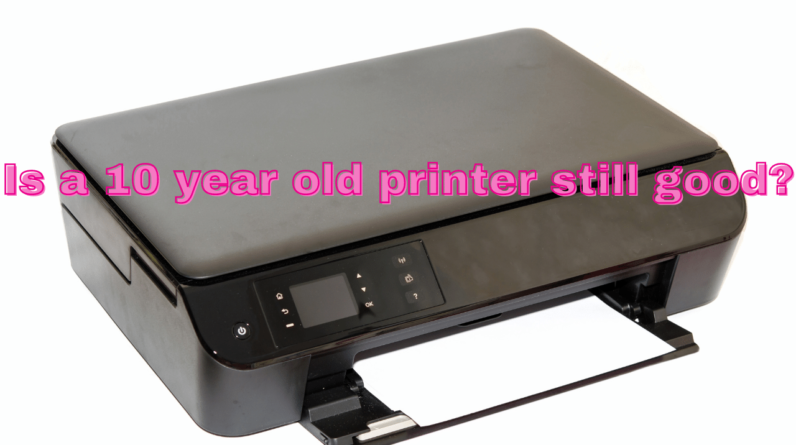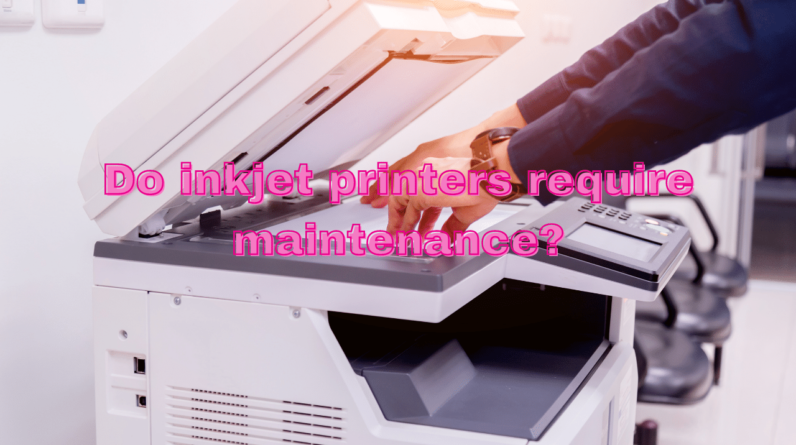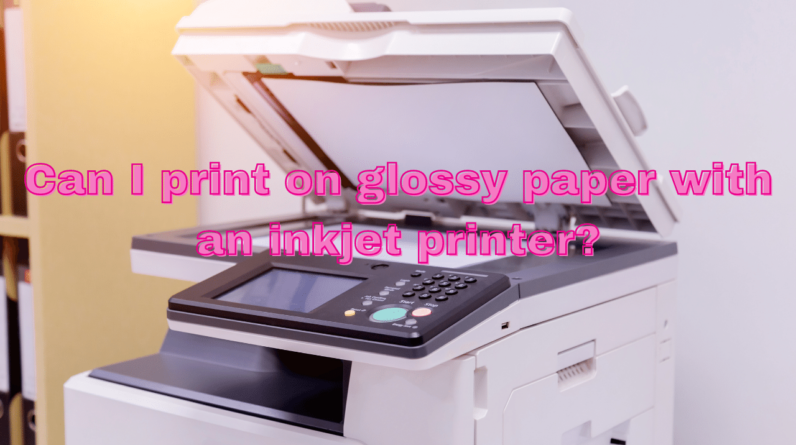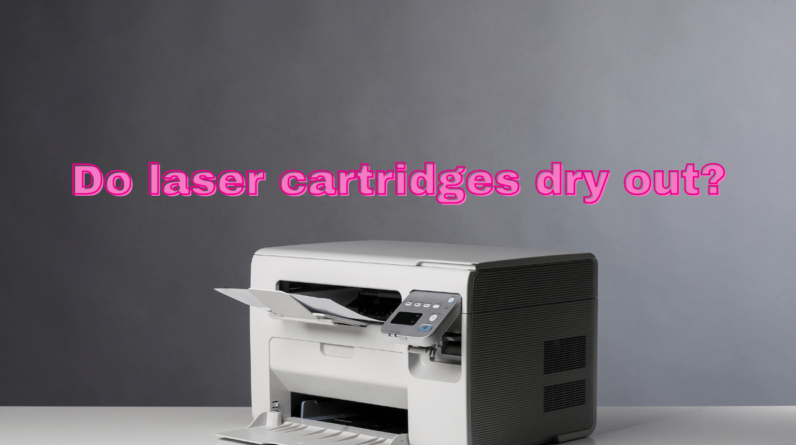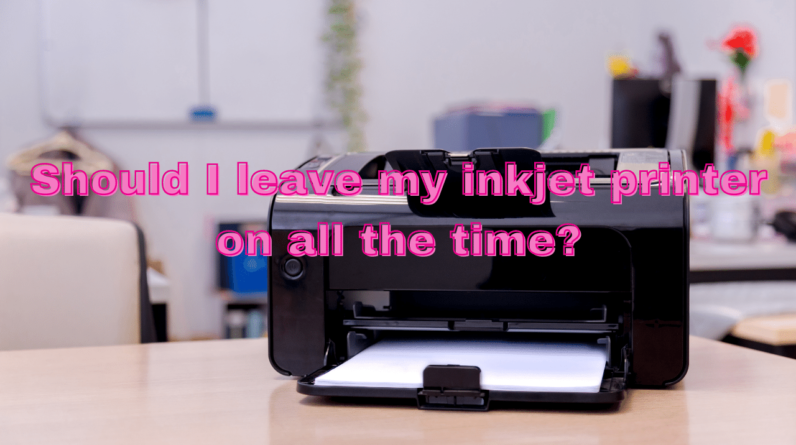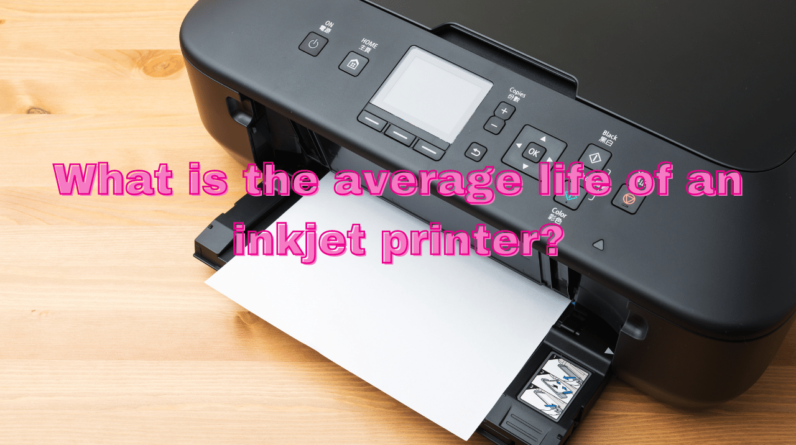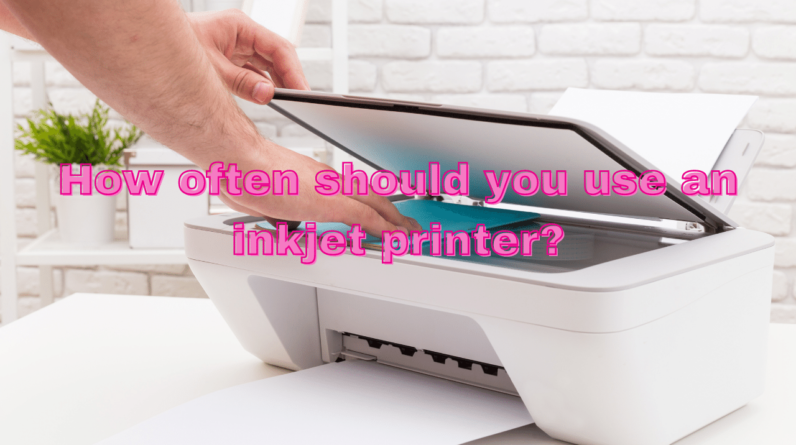
Disclaimer: This post may contain affiliate links. As an Amazon Associate, we earn from qualifying purchases.
Imagine if you could make your inkjet printer last longer and avoid any costly repairs or replacements. Well, the answer may lie in how often you actually use it. In this article, we explore the question of how often you should use an inkjet printer and provide you with some valuable insights to help you maximize its lifespan and performance. From understanding the importance of regular usage to finding the right balance, we’ve got you covered. So, hold on tight as we take a closer look at this intriguing topic.

This image is property of images.unsplash.com.
Factors Affecting Inkjet Printer Usage Frequency
Print Volume
The amount of printing you do on a regular basis is one of the main factors that determine the frequency of inkjet printer usage. If you have a high workload that requires you to print large volumes of documents and images daily, you will likely need to use your inkjet printer more frequently. On the other hand, if your printing needs are minimal and you only print occasionally, your inkjet printer usage frequency will be lower.
Printer Usage Patterns
Your printer usage patterns also play a role in determining how often you should use your inkjet printer. If you have a consistent routine of printing at the same time each day or on specific days of the week, then your inkjet printer usage will be more regular. However, if your printer usage is sporadic and unpredictable, your inkjet printer usage frequency will vary accordingly.
Print Quality Requirements
The print quality requirements for your documents and images can also impact how often you should use your inkjet printer. If you require high-quality prints with vibrant colors and sharp details, you may need to use your inkjet printer more frequently to ensure consistent results. On the other hand, if your print quality requirements are more flexible and you are satisfied with standard quality prints, you may not need to use your inkjet printer as often.
Recommended Usage Frequency for Inkjet Printers
Regular Daily Use
For individuals or businesses with high-volume printing needs, regular daily use of an inkjet printer is recommended. This ensures that the printer stays active and prevents ink from drying up or printheads from becoming clogged. Regular printing also helps to maintain print quality and prevent issues such as banding or streaking in prints.
Occasional Use
If you only have occasional printing needs, such as printing a few documents or photos once in a while, using your inkjet printer once every week or two should suffice. This level of usage allows you to keep the printer in working condition while minimizing ink consumption.
Infrequent Use
If you rarely use your inkjet printer, such as in situations where you have access to alternative printing methods, it is recommended to print at least once a month. Infrequent use of an inkjet printer can lead to ink cartridge drying, printhead clogging, and poor print quality. Regular usage ensures that the ink flows properly and prevents any potential damage.
Maintenance Considerations for Inkjet Printers
Cleaning Routines
Regularly cleaning your inkjet printer is essential to keep it in optimal working condition. This includes cleaning the printhead nozzles, paper rollers, and other internal components. Cleaning routines can vary depending on your printer model, but typically involve using cleaning cartridges, printer maintenance software, or manually cleaning with lint-free cloths and isopropyl alcohol.
Ink Cartridge Replacement
Replacing ink cartridges when they are running low or empty is crucial for maintaining print quality. Pay attention to error messages or low ink warnings from your printer to ensure timely replacement. It is recommended to use genuine ink cartridges from the manufacturer to avoid compatibility issues and ensure the best performance.
Printhead Maintenance
Printheads are an important component of inkjet printers that can get clogged or damaged over time. Some inkjet printers have integrated printheads within the ink cartridges, making it easier to maintain. For printers with separate printheads, manual cleaning may be required. Consult your printer’s user manual or manufacturer’s website for specific instructions on maintaining and cleaning printheads.
Guidelines for Extending the Lifespan of an Inkjet Printer
Proper Shutdown Procedures
When you are not using your inkjet printer, it is important to follow proper shutdown procedures to prevent unnecessary wear and tear. Use the printer’s power button or the software “Power Off” option instead of unplugging it directly from the power source. This allows the printer to complete its shutdown routine and reduces the risk of damage to internal components.
Avoiding Long Periods of Inactivity
Inkjet printers are designed to be used regularly, and long periods of inactivity can cause ink to dry up, printheads to clog, and other issues to arise. If you know that you will not be using your printer for an extended period of time, it is recommended to print a test page every few weeks to keep the ink flowing. Alternatively, you can use printer maintenance modes or routines specifically designed for prolonged periods of inactivity.
Regular Software Updates
To ensure optimal performance and compatibility with your operating system, it is important to regularly update the software and drivers for your inkjet printer. These updates often include bug fixes, performance improvements, and new features that can enhance the overall printing experience. Check the printer manufacturer’s website or use the printer software’s update feature to stay up to date with the latest software releases.
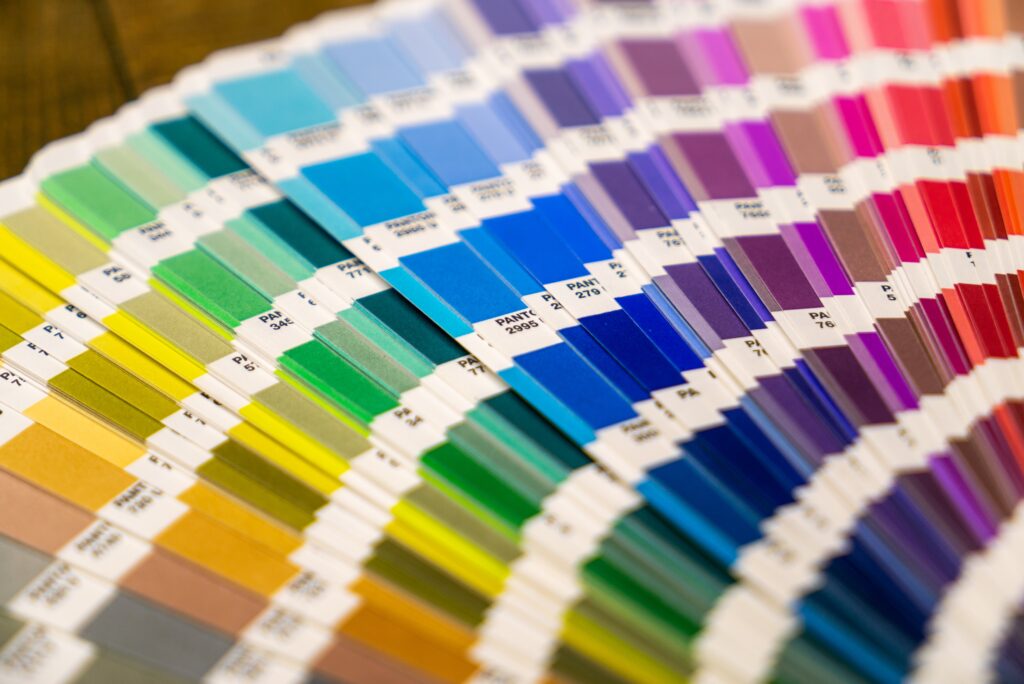
This image is property of images.unsplash.com.
Print Cost Considerations for Inkjet Printers
Cost per Page Calculation
Calculating the cost per page for your inkjet printer can help you understand the financial implications of your printing habits. This calculation takes into account the price of ink cartridges, estimated page yield, and other consumables such as paper. By knowing the cost per page, you can make informed decisions about printing and potentially explore more economical options.
Economical Printing Practices
To reduce print costs, there are several practices you can adopt. First, consider using the “draft” or “economode” printing settings, which use less ink and print at a lower quality. Printing in grayscale can also save color ink. Additionally, make sure to preview and proofread your documents before printing to avoid waste.
Investing in a Laser Printer
If your print volume is consistently high and you are concerned about ink costs, investing in a laser printer may be a more cost-effective option in the long run. Laser printers typically have a lower cost per page and can handle high-volume printing more efficiently. However, it is important to consider factors such as initial cost, size, and specific printing needs before making the switch.
Environmental Impact of Inkjet Printer Usage
Reducing Paper Waste
Printing can contribute to paper waste, so it is important to be mindful of your paper usage. Consider using double-sided printing whenever possible to reduce the amount of paper used. You can also adjust print settings to include multiple pages per sheet or print in booklet format. Furthermore, utilizing digital document management and storage solutions can help minimize the need for paper printing.
Recycling Printer Cartridges
The ink cartridges used in inkjet printers can be recycled to reduce environmental impact. Many printer manufacturers offer recycling programs where you can return empty cartridges for proper disposal or recycling. Some office supply stores and recycling centers also accept used ink cartridges. Recycling printer cartridges helps conserve resources and reduce landfill waste.
Energy-Efficient Settings
To minimize the energy consumption of your inkjet printer, take advantage of energy-saving features and settings. Some printers have power-saving modes that automatically turn off or enter sleep mode after a period of inactivity. Adjusting the printer’s sleep timer or turning it off when not in use can help reduce energy usage.

This image is property of images.unsplash.com.
Printing Alternatives to Reduce Inkjet Printer Usage
Digital Document Management
With the advent of digital technologies, many documents can be stored, shared, and accessed electronically. Utilizing digital document management tools, such as cloud storage, email attachments, or document collaboration platforms, can significantly reduce the need for printing. By embracing digital workflows, you can minimize inkjet printer usage and save resources.
Shared Printing Resources
In certain environments, such as offices or educational institutions, shared printing resources can be implemented to reduce individual printer usage. Instead of having a printer at every desk or workstation, centralize printing through networked printers or designated printing areas. This encourages efficient use of resources and reduces the overall inkjet printer usage.
Professional Printing Services
For specific printing needs, such as high-quality marketing materials or large-format prints, considering professional printing services can be a viable option. These services offer professional-grade equipment and expertise, often at a competitive price. By outsourcing printing tasks to professionals, you can reduce the usage of your inkjet printer for specialized projects.
Special Considerations for Photo Printing with Inkjet Printers
Print Frequency for Photos
When it comes to printing photos with an inkjet printer, the frequency of usage can vary. If you are an avid photographer or enjoy printing your photos regularly, using your inkjet printer every couple of weeks is ideal. Regular usage helps prevent ink from drying up, maintains print quality, and ensures accurate color reproduction. However, if you only print photos on occasion, following the general occasional use guidelines should suffice.
Optimizing Photo Printing Settings
To achieve the best results when printing photos with an inkjet printer, it is important to optimize the printing settings. Pay attention to color calibration, resolution, and paper type settings to ensure accurate color reproduction and sharp details. Some printers offer specialized photo printing modes or software that can assist in achieving optimal results.
Using Specialized Photo Paper
Choosing the right type of photo paper is crucial for achieving high-quality prints. There are various options available, such as glossy, matte, or semi-gloss paper, each offering different characteristics and finishes. Experimenting with different types of photo paper can help you find the one that suits your preferences and enhances the overall quality of your printed photos.
Troubleshooting Inkjet Printer Issues Related to Insufficient Usage
Clogged Printheads
If you do not use your inkjet printer regularly, there is a higher risk of printheads getting clogged. Clogged printheads can result in poor print quality, such as streaks or missing colors. To troubleshoot this issue, most printers have a printhead cleaning function that you can activate either through the printer’s control panel or the printer software. Running a printhead cleaning cycle can help unclog the nozzles and restore normal printing.
Dried-Up Ink Cartridges
Ink cartridges that are not used for an extended period of time can dry up, leading to print quality issues. To address this problem, removing the dried-up ink cartridges and gently wiping the nozzles with a lint-free cloth dampened with distilled water or isopropyl alcohol can help restore ink flow. However, prevention is key, so it is best to use your inkjet printer regularly to avoid this issue altogether.
Ink Smudging and Streaking
Insufficient inkjet printer usage can also result in issues like ink smudging and streaking on printed documents or photos. These issues are often caused by old or low-quality ink cartridges. If you encounter smudging or streaking, try replacing the ink cartridges with new ones from a reputable manufacturer. Additionally, ensure that your printer is set to the appropriate print quality settings for the paper being used.
Situations Where Frequent Inkjet Printer Usage Is Not Necessary
Retired Professionals
Retired professionals who no longer have extensive printing needs may find that frequent inkjet printer usage is not necessary. If printing becomes limited to the occasional document or photo, following the guidelines for occasional or infrequent printer use should be sufficient. In such cases, it is important to perform maintenance routines periodically to keep the printer in good condition.
Limited Printing Needs
Individuals or businesses with limited printing needs, such as those who rely more on digital communication and document management, may not require frequent inkjet printer usage. As long as proper maintenance and occasional use are observed, the printer can remain functional and ready for the infrequent printing needs that may arise.
Access to Alternative Printing Methods
In situations where alternative printing methods are readily available, such as access to a nearby print shop or a shared printing resource, frequent inkjet printer usage may not be necessary. Outsourcing printing tasks or utilizing alternative printing methods for specialized needs can reduce the reliance on personal inkjet printers and ensure cost-effective and high-quality prints when needed.
In conclusion, the frequency of inkjet printer usage depends on various factors, including print volume, printer usage patterns, and print quality requirements. Regular daily use is recommended for high-volume printing needs, while occasional or infrequent use may suffice for individuals with limited printing needs. Proper maintenance routines, such as cleaning, ink cartridge replacement, and printhead maintenance, are essential to keep inkjet printers in good condition. Considerations for print costs, environmental impact, and alternative printing methods should also be taken into account to ensure efficient and sustainable printing practices. With the appropriate usage and care, an inkjet printer can provide reliable and high-quality prints for a long time.

